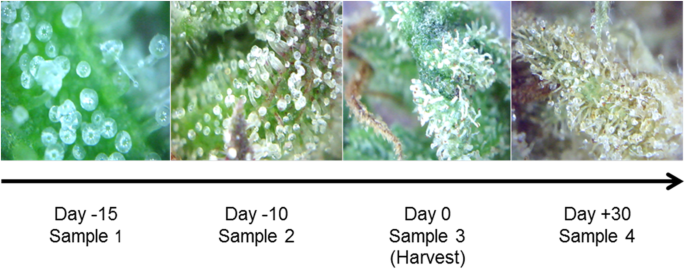
“Atherosclerotic disease is the leading cause of death world-wide. Our goal was to explore the effect of phytocannabinoids on the molecular mechanisms triggering the development of the atheromatous lesion.
Three cannabis sativa extracts of different chemotypes were chemically characterized by UPLC-DAD. The capacity of the extracts to prevent the oxidation of LDL, the formation of foam cells and the activation of an inflammatory response by J774 cells, were monitored by UV-Vis spectrometry, confocal-microscopy and western blot. Three varieties of cannabis sativa, with high (E1), intermediate (E2) and low (E3) THC/CBD ratios were selected.
The three cannabis extracts inhibited the oxidation of LDL by copper ions and the formation of foam cells by J774.1 cells challenged with oxLDL (ED50 5-12 μg mL-1). The effect of the cannabinoid extracts on the endocytic process was independent of the canonical cannabinoid receptors, CB1 and CB2, but related to the action of non-canonical receptors (TRPV1, TRPV4 and GPR55), involved in calcium signaling. Decreased levels of CD36 and OLR1 scavenger receptors were, at least partially, responsible for the diminished uptake of oxLDL induced by phytocannabinoids. The downregulation of CD36 and OLR1 could be explained by the observed inhibitory effect of the cannabis extracts on the activation of the NFκB pathway by oxLDL.
Phytocannabinoids interfere with the main events leading to the development of the atheromatous plaque, opening new venues on atherosclerosis therapy.”
https://pubmed.ncbi.nlm.nih.gov/39705234/
“Our results highlight the capacity of phytocannabinoids to ameliorate the processes leading to the development and progression of atherosclerotic lesions through inhibiting LDL oxidation, decreasing the formation of foam cells after oxLDL challenge and reducing scavenger receptor synthesis by interfering with NFκB activation, supporting the therapeutic potential of medicinal cannabis in atherosclerosis and the need to unravel the molecular mechanisms of phytocannabinoids on the cardiovascular system.”
https://journals.plos.org/plosone/article?id=10.1371/journal.pone.0310777







 “The Endocannabinoid System (ECS) is primarily responsible for maintaining homeostasis, a balance in internal environment (temperature, mood, and immune system) and energy input and output in living, biological systems.
“The Endocannabinoid System (ECS) is primarily responsible for maintaining homeostasis, a balance in internal environment (temperature, mood, and immune system) and energy input and output in living, biological systems.  “In recent decades, epidemiological, clinical, and experimental studies have demonstrated that a diet with antioxidant or anti-inflammatory function plays a central role in the prevention of atherosclerosis (AS).
“In recent decades, epidemiological, clinical, and experimental studies have demonstrated that a diet with antioxidant or anti-inflammatory function plays a central role in the prevention of atherosclerosis (AS).  “Multiple therapeutic properties have been attributed to Cannabis sativa. However, further research is required to unveil the medicinal potential of Cannabis and the relationship between biological activity and chemical profile.
“Multiple therapeutic properties have been attributed to Cannabis sativa. However, further research is required to unveil the medicinal potential of Cannabis and the relationship between biological activity and chemical profile.